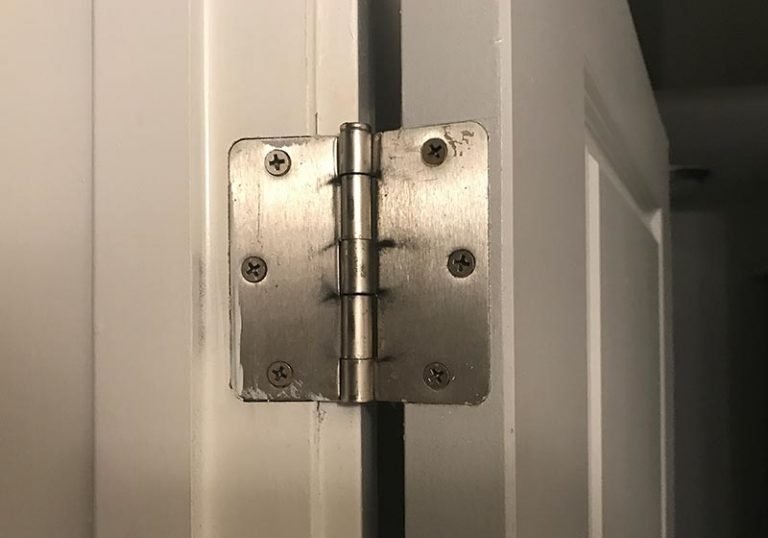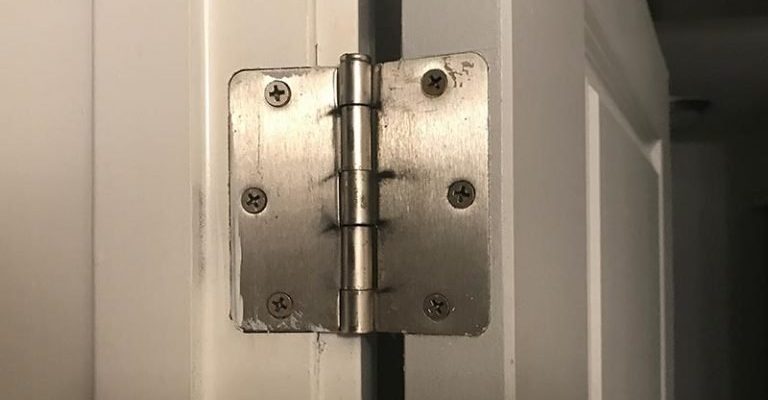
Here’s the thing: exterior door hinges take a lot of daily abuse. They face humidity, temperature changes, dust, and—sometimes—a bit too much force from a slammed door. Over time, those creaks can grow from a tiny squeak to a full-blown screech. But what exactly causes that noise? And how do you fix it for good? Let’s break down what’s really going on and how you can get some peace and quiet back in your entryway.
What Causes a Door Hinge to Creak?
Most of the time, a creaking noise from your exterior door hinge comes down to one thing: friction. Think about it—your door sits on metal hinges, which are designed to let the heavy slab swing smoothly open and closed. But when those metal parts start rubbing together without enough lubrication, you get the unwelcome soundtrack of groans and squeaks.
Let me explain what’s really happening. Over time, moisture and dirt creep into the hinge knuckles (that’s the cylinder part where the pin sits). These tiny bits of grime build up, and as the metal pin rotates, the debris causes extra drag. Combine this with dry metal surfaces, and every opening or closing motion is like running a violin bow over rusted strings. Not exactly music to your ears.
It’s not just dirt and dust, though. On exterior doors, weather plays a huge role. Rain, heat, and cold can cause metal parts to expand and contract. This shifting can squeeze out any lubricant that was there, leaving the hinge dry. So if your fancy Kwikset or Yale remote-controlled deadbolt suddenly sounds haunted, the local climate might be to blame.
How to Diagnose Which Hinge Is Making Noise
You might be wondering, “Do I need to fix all the hinges, or just one?” Good question—here’s how to find the noisy culprit. Start by slowly opening and closing your exterior door while listening closely. Sometimes you’ll notice the creak happens at a certain angle or with a little extra weight. That’s a big clue.
Try this simple test:
- Open the door halfway and press on the top, middle, then bottom. Listen carefully—does the creak change or get louder?
- If you hear noise at the top, chances are it’s the upper hinge. Same trick for the bottom and middle positions.
- If you’re still not sure, place a finger lightly on each hinge as you open and close the door. You’ll often *feel* the vibration in the noisy spot before you hear it.
If all the hinges feel or sound squeaky, you may need to service them all. And here’s an extra tip: if your door has a code or smart lock (like a Schlage Sense or similar), always check that the added weight isn’t pulling too much on a particular hinge. Heavy hardware can throw things out of sync and make creaking worse.
Why Do Exterior Doors Creak More Than Interior Ones?
It’s true—exterior doors are much more likely to put up a creaky protest than the doors inside your home. There’s a simple reason for that: they’ve got a harder job. An exterior door has to block out the weather, keep your home secure, and still swing easily on its hinges every day.
Take the classic front entry door. It’s not just heavier than a basic bedroom door; it’s often built from solid wood, fiberglass, or reinforced steel. Add a smart lock, remote-control access, or a keyed deadbolt, and you’re looking at a lot of stress on those hinges. This extra weight pushes the hinge pins and knuckles to their limits, grinding away any lubrication much faster.
Weather is the big villain here. On humid days, wood swells and metal expands, making everything feel tighter. In freezing temperatures, metal can contract just enough to throw the hinge out of alignment, creating new points of friction. Factor in wind-blown dust or pollen, and you’ve got the perfect recipe for a creaky hinge. So if your exterior door makes more noise than an interior one, don’t take it personally—blame Mother Nature and those heavy-duty locks.
Can a Creaking Door Hinge Cause Damage?
You might be thinking, “It’s just a little noise—do I really need to fix it?” Here’s why you shouldn’t ignore a creaky hinge. That sound is actually a warning sign. If the metal is grinding or scraping with every swing, you’re wearing away at the hinge pin and the knuckle with every use. Over weeks or months, this can lead to:
- Warped hinge plates that no longer sit flush with the door or frame
- Stretched screw holes that let the hinge pull loose over time
- Permanently bent pins that are tough to reset or repair
All these issues make your door hang unevenly or close with a gap—bad news for your home’s insulation and security. With smart locks or remote-controlled hardware, extra vibration can also knock sensors out of sync or even drain the battery faster as the motor works harder. Long story short, a creak today can become a much bigger (and more expensive) repair if you let it slide.
Pro tip: Address a creaking exterior door hinge early, before it snowballs into a real hardware headache.
How to Fix a Creaking Exterior Door Hinge
Ready to quiet that noisy hinge? Good news: you don’t need a pro for most fixes. A little DIY troubleshooting can make a world of difference, whether you have an old-school brass hinge or the latest Yale code-enabled entry system. Here’s a step-by-step approach:
- Lubricate the hinge: Use a silicone-based spray, lithium grease, or even household oil (skip WD-40 for long-term use). Apply a small amount along the hinge knuckles and gently move the door back and forth to spread it.
- Remove the hinge pin: For extra-stubborn creaks, tap out the hinge pin with a hammer and nail. Wipe it clean, coat it with lubricant, then tap it back in. This step can reset stubborn squeaks and help everything move in sync.
- Tighten loose screws: Sometimes, creaking comes from the hinge being just a hair loose. Use a screwdriver to check all mounting screws—especially if you have remote-enabled locks or extra-heavy doors.
- Replace worn hinges: If the metal looks bent, cracked, or rusted, it may be time for a new hinge entirely. Most hardware stores carry universal and brand-specific options—just make sure to match the size and finish.
Take your time—rushing can lead to stripped screws or misaligned hinges. And if you’re reinstalling a smart-enabled Schlage or similar brand, make sure the lock code, battery, and remote sync are all working properly after you reattach the door.
What Lubricant Works Best for Door Hinges?
Not all lubricants are created equal, especially for exterior doors exposed to the elements. While a dab of cooking oil can stop a squeak in a pinch, it won’t last—plus, it’ll collect dirt fast. For a lasting fix, look for these options:
- Silicone spray: Water-resistant and perfect for outdoor hinges. It won’t gum up or attract grime.
- White lithium grease: Thicker and longer-lasting, but a bit messier to apply. Best for doors that see a ton of use (think busy front entries or garages with smart remote openers).
- Graphite powder: A dry option that works for door locks, but can get messy on painted doors or trim.
Avoid petroleum jelly or WD-40 for exterior hinges. They work short-term, but actually attract more dust and dirt over time. If your hinge is exposed to rain or salt air (looking at you, coastal homes), reapply lubricant every few months to keep things moving smoothly and your remote entry system working in sync.
Should You Replace Old or Rusty Hinges?
Sometimes, lubrication and a quick reset just aren’t enough. If your door hinge is rusty, cracked, or bent, it’s time to upgrade. This is especially important for exterior doors, where hinge failure can mean more than just noise—it can throw the whole door out of alignment, or worse, compromise your security.
Let me put it this way: If you notice rust flakes when you tap the hinge, or the screw holes are stripped so badly the screws just spin, you’re overdue for a replacement. Newer hinges from brands like Schlage or Kwikset often come with more weather-resistant finishes and are designed to sync better with heavier modern doors and smart locks.
When replacing:
- Bring the old hinge to the hardware store for an exact match
- Consider upgrading to a ball-bearing model for quieter, smoother motion
- Check the fit before reinstalling your code or remote access lock—sometimes a thicker hinge changes the gap on the door jamb
Replacement is a little more work, but it guarantees a quieter, safer door—and makes all those modern smart features work as they should.
How to Prevent Creaking Hinges in the Future
Prevention beats troubleshooting every time. If you want to keep your exterior door from creaking (and your family from groaning every time someone comes in late), make hinge care part of your seasonal home checklist.
Here’s what works:
- Lubricate hinges twice a year—especially before winter and summer, when weather shifts are toughest on hardware
- Check for loose screws or sagging doors every few months, tightening as needed
- Look for chipped paint or rust and touch up or replace as needed to stop corrosion before it starts
- If you’re installing a remote-controlled lock or smart entry system, make sure the added weight is evenly distributed—sometimes an extra hinge is needed for heavy doors
A couple of minutes with a spray can and screwdriver twice a year is all it takes to keep things running smoothly—no special skills, tools, or troubleshooting code needed.
Wrapping Up: Quiet, Smooth Doors Are Within Reach
Living with a creaking exterior door hinge doesn’t just test your patience—it can signal wear that leads to bigger problems down the line. The good news? With a bit of attention and the right lubricant, you can get your entryway gliding quietly again, no matter what kind of lock or hardware you use. Stay proactive with maintenance, listen for early warning signs, and don’t be afraid to replace old parts before they fail. Whether you’re working with a high-tech remote code entry system or a traditional handle set, a little care will keep things moving smoothly—and keep your home’s secrets safe, one silent swing at a time.
